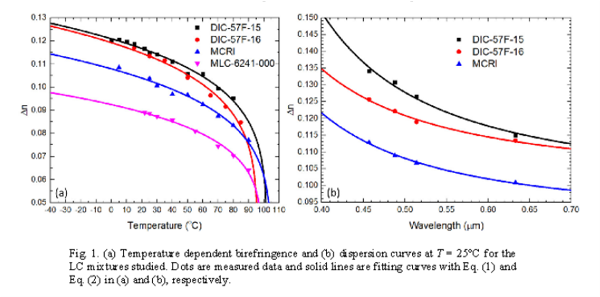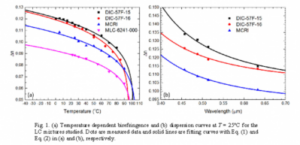Shin-Tson Wu, Pegasus Professor of Optics and Photonics, University of Central Florida – College of Optics and Photonics, USA together with support from Xi’an Modern Chemistry Research Institute in Xi’an, China, and DIC Corporation, Japan has developed several new LCD mixtures aiming at automotive LCD applications. These applications are extending from head up displays and instrument clusters to infotainments screens in modern cars.
According to the press release published by OSA, the new development aims at overcoming the shortcomings of today’s LCDs in terms of response time and functionality at extreme temperatures. While at high temperatures the LCD material may exceed its clearing point and become non-functioning, the lower end temperatures may freeze the LCD material or increase the response time to a point where the display is not usable anymore.
The press release quotes current European automotive standards requiring a response time for pixels to change from one brightness to another of 200 milliseconds at -20° C (or -4° F) and 300 milliseconds at -30° C (or -22° F). This is quite interesting when we consider that a panel driven at 60Hz will require a response time of 16.7milliseconds. Anything slower than that will cause the pixel not to reach its final brightness level, which may result in motion blur. This is a loose relationship though, as was pointed out by my colleague, Dr. Ray Soneira from DisplayMate. On his website he said that he sees no issues with slower response times over 40 ms when watching video.
However, motion blur becomes an issue when watching moving images / test patterns. It seems as if the usage of displays in the automotive environment is more like watching moving images rather than video, indicating that motion blur could become an issue at lower temperatures in cars that use LCD in their dashboards.
 Source: University of Florida “High performance liquid crystals for vehicle displays “
Source: University of Florida “High performance liquid crystals for vehicle displays “
The group is using mixtures of LCD materials that result in a eutectic mixture lowering the melting point. They have succeeded in developing LCD mixtures that have a clearing point higher than 100° C (or 212° F), and a melting point below -40° C (or -40° F). They are showing data for temperature birefringence and dispersion curves indicating that these materials will work in the mentioned temperature ranges. However, the measured data points only cover a temperature range from 0° C to about 90° C – the rest of the curve is fitted curves.
Analyst Comment
This shows again that we are still not even close to what LCDs can achieve. The fight between LCD and OLED is still not over, especially in the automotive world where LCD is the reigning king. – NH

